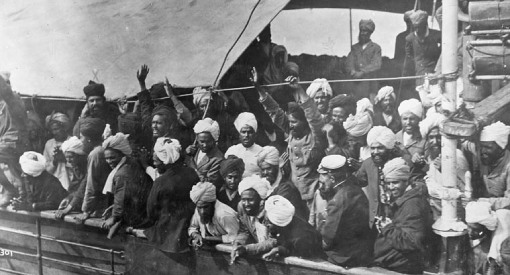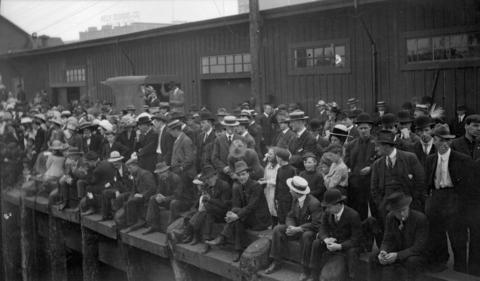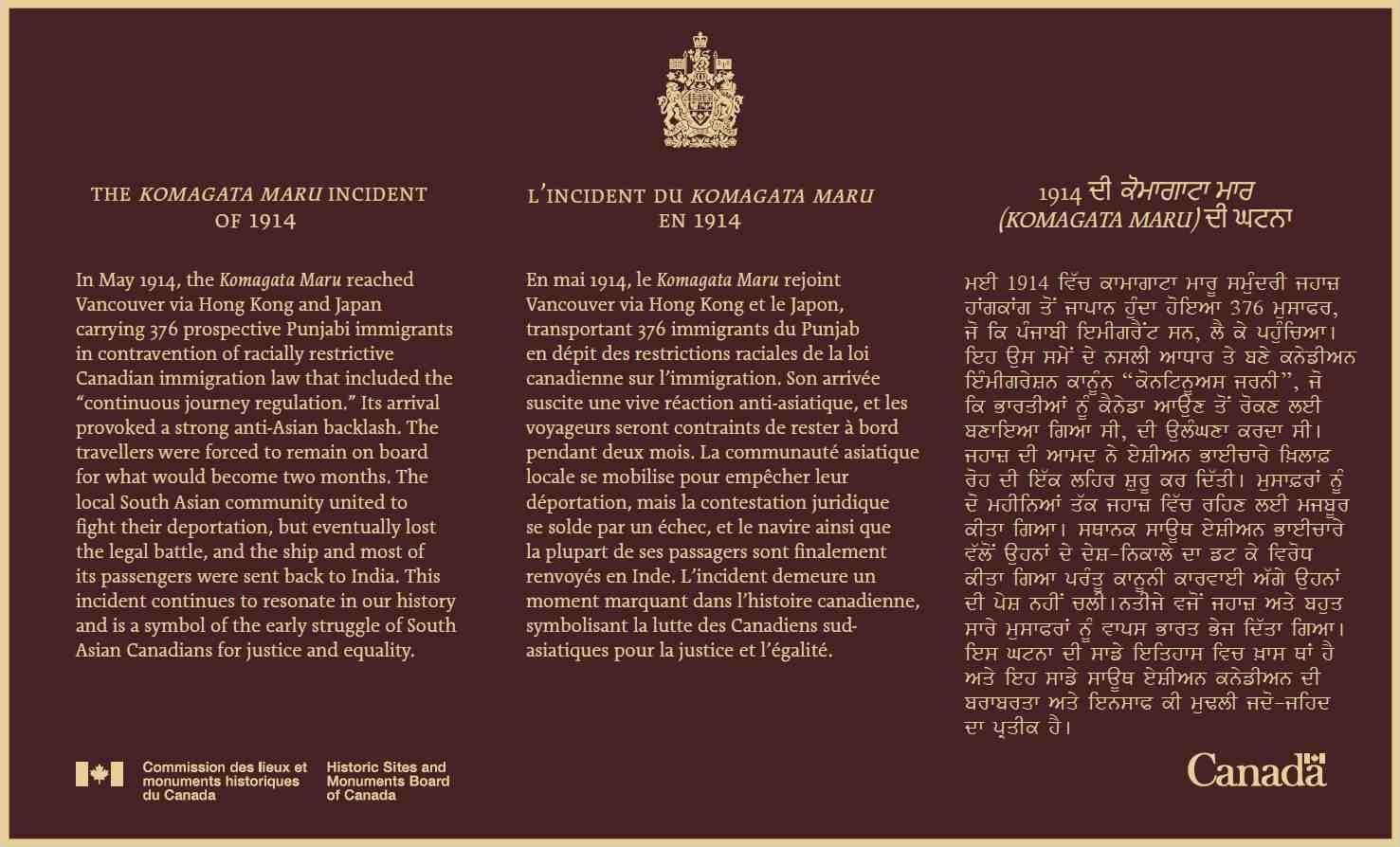The Komagata Maru Incident of 1914 National Historic Event
The Komagata Maru Incident of 1914 was designated a national historic event in 2014.
Historical importance: The passengers on board the S.S. Komagata Maru and their supporters in the local South Asian community challenged Canada’s racist and exclusionary immigration policies.
Commemorative plaque: Address to be confirmed Footnote 1

© Library and Archives Canada / PA-034015

© Library and Archives Canada / C-075261
The Komagata Maru Incident of 1914
In May 1914, the Komagata Maru reached Vancouver via Hong Kong and Japan carrying 376 prospective Punjabi immigrants in contravention of racially restrictive Canadian immigration law that included the “continuous journey regulation.” Its arrival provoked a strong anti-Asian backlash. The travellers were forced to remain on board for what would become two months. The local South Asian community united to fight their deportation, but eventually lost the legal battle, and the ship and most of its passengers were sent back to India. This incident continues to resonate in our history and is a symbol of the early struggle of South Asian Canadians for justice and equality.
The Komagata Maru Incident of 1914
On May 23, 1914, the vessel S.S. Komagata Maru reached the shores of Burrard Inlet in Vancouver, British Columbia. On board were 376 passengers, British subjects of Indian descent, including 340 Sikhs, 24 Muslims and 12 Hindus, along with the Japanese crew and a cargo of 1,500 tons of coal. The ship was not allowed to berth so for the next two months government officials denied all passengers entry into Canada. This standoff represented an important challenge to Canadian immigration policies that discriminated on the basis of race.

© City of Vancouver Archives, public domain, reference code AM1584 : CVA 7-122
At the time, Canada severely restricted immigration from Asia. South Asians from the Indian subcontinent were British subjects, which theoretically meant that they should have had the right to move freely throughout the empire and settle in the Dominion of Canada. However, Canada tried to bar their entry with legislation in 1908 that required all migrants from India to come on a “continuous journey” from their point of origin. The Canadian government subsequently worked with major steamship companies to end service along these routes and to ensure that passengers would not be able to make a continuous journey.
To combat this racist discrimination, Gurdit Singh Sarhali, a Malaysian businessman and entrepreneur, chartered S.S. Komagata Maru to bring South Asians from the Indian subcontinent to Canada. Local newspapers in British Columbia stoked the fears of the public and the government with warnings that the vessel was en route with a “horde” or “influx” of Indian immigrants on board.
For two months after the arrival of S.S. Komagata Maru, government officials prevented all passengers from disembarking and entering Canada. The passengers were denied food and water, and the situation became more desperate. At the height of the standoff, the authorities brought in HMCS Rainbow on July 23rd to force the passengers to leave the shores of Burrard Inlet. The passengers resisted and fought back by throwing bricks and coal onto the Rainbow crew. In the end, the Royal Canadian Navy cruiser withdrew.

© City of Vancouver Archives, public domain, reference code AM1584 : CVA 7-129
From the outset, a shore committee composed of local South Asian descent activists in the lower mainland raised funds to hire lawyer J. Edward Bird to defend the passengers’ rights of entry. The court allowed only one case to be heard and based on that case summarily denied all passengers entry, except 20 passengers who could prove their prior residency in Canada.
After two long months filled with great personal and financial hardships, systemic racism, colonial, imperialism, and legal barriers, all passengers were forced to return to India. Local citizens picnicked with their families as they hurled insults at the passengers, watching the “escapade” of the ship being escorted out of the inlet on July 23rd. When S.S. Komagata Maru returned to Budge Budge in Calcutta on September 29, 1914 (today known as Kolkata, India), a massacre occurred. British Indian forces—informed by British perceptions that the passengers were revolutionaries—fired at the returnees. Twenty passengers died, many more were injured, more than two hundred were imprisoned without charge, and others went into exile.
Backgrounder last update: 2016-07-13
- Date modified :
